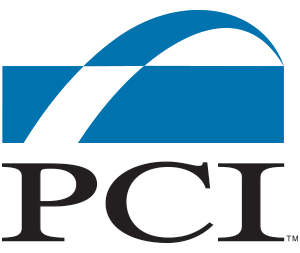High-Performance Aesthetics in Precast Concrete
Precast Concrete Does More than Look Pretty
Precast concrete panels offer an unlimited vocabulary for design concepts to be executed in a broad range of architectural styles, shapes, and sizes. The material provides limitless potential for developing and manipulating mass, color, form, texture, and using detail to obtain simple, clean shapes yielding an interesting play of light and shadow.
Harnessing and understanding the aesthetic versatility of a sustainable material is important because it grants to the designer both performance and an expansive design palette. Not only does an aesthetically versatile material offer a deep design palette, but it should also minimize construction complexity, reduce life-cycle costs, be durable, and have a long service life; and, contribute to the efficiency and resiliency of the structure.

Photo courtesy of Moore Ruble Yudell; inset photo courtesy of Gate Precast Company
The precast concrete panels use formliners, with sandblasting and acid-etching to create a façade that looks like a rainscreen system, however it is a face-sealed or rain-barrier system.
Understanding the range of precast allows for a full picture of design possibilities. Proper selection of color, form, and texture for a building’s precast concrete exterior is critical in creating a successful aesthetic appearance. The decisions depend not only on cost, delivery schedule, and client preferences, but also on the local and regional context. Desired colors and textures can be achieved by varying aggregate selection, matrix color, size of aggregates, finishing processes, and depth of exposure of the aggregate. This textural flexibility allows designers to use combinations of different finishes within a single precast concrete unit using the same or different concrete mixtures.
Multiple finishing techniques, or concrete mixtures with differently colored matrices exposed at the face of the same panel offer an economical yet effective way to heighten aesthetic interest through the use of tone and texture in facade treatments. The use of multiple finishes demands that the designer make an early decision to ensure that the overall concept allows for transitions in finish color and texture. A suitable rustication or demarcation needs to be detailed to separate the different colors and/or finishes.
Achievement of a wide variety of design objectives is possible through the choice of appropriate aggregates and textures in combination with well-conceived production and erection details. The precast concrete unit’s finish should be considered before its shape is finalized.
It is recommended that the architect contact local PCI-Certified architectural precast concrete producers during the early stages of design and throughout the development of the contract documents. This will help optimize the design resulting the highest level of quality, while minimizing construction time and cost.
Precast concrete is a high-performance material whose initial plasticity is incredibly responsive to the designer’s creative needs. Manufactured off-site under factory-controlled conditions ensures a uniform, high-quality building facade in the desired shapes, colors, and textures. For the owner and tenant, precast concrete provides the long-term durability, fire resistance, sound attenuation, energy efficiency, and general life-safety attributes that are inherent in the material. For the observer, a well-designed precast concrete structure can match the mood of its surroundings or create an exciting counterpoint of visual excitement.
Amanda Voss, MPP, is an author, editor, and policy analyst based in Colorado. She serves as the managing editor for Energy Design Update, has taught multiple live AIA CEU classes, and served on the board of Energy Literacy Advocates. She has a background in public policy, residential construction, and custom building.

|
PCI |








